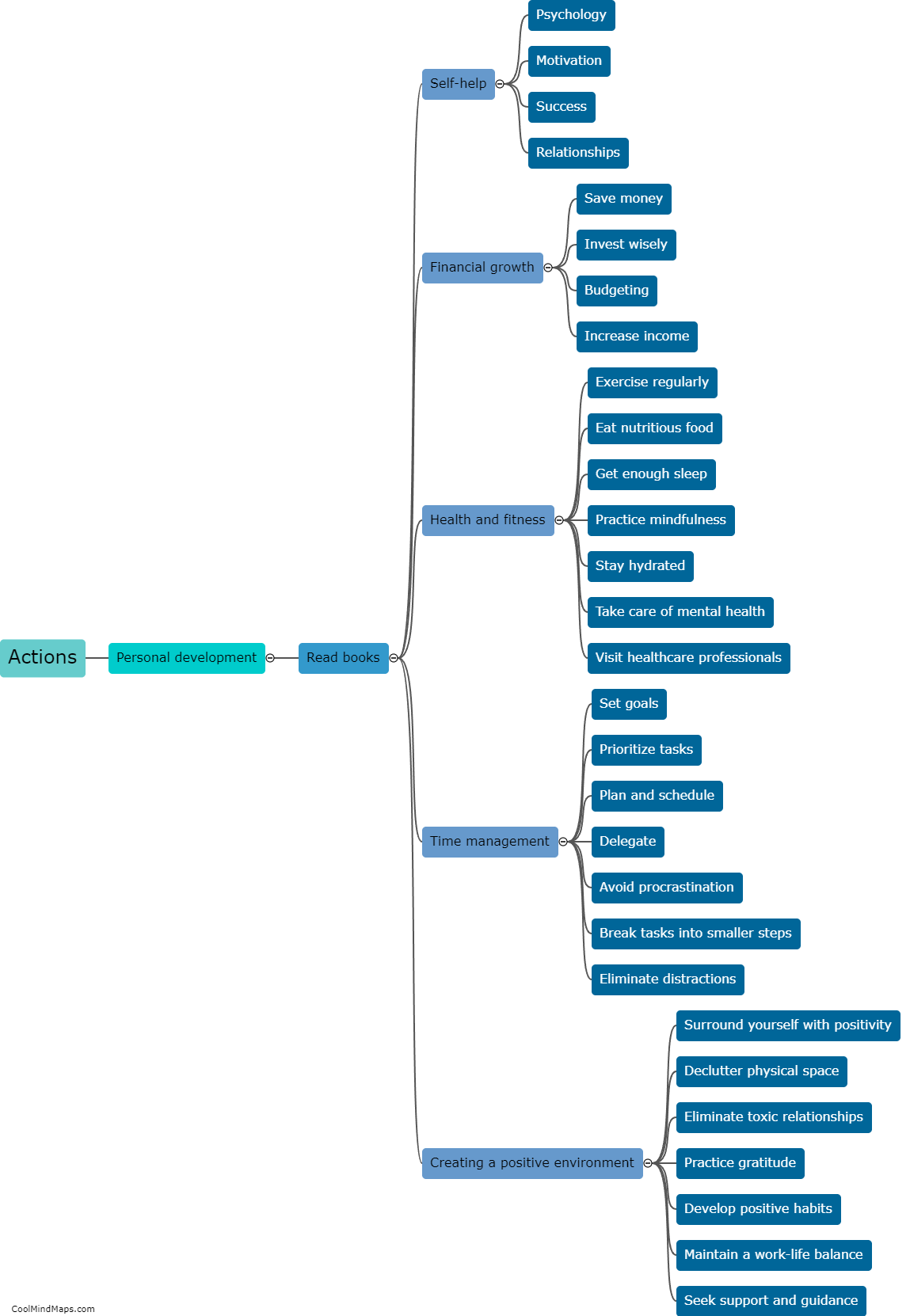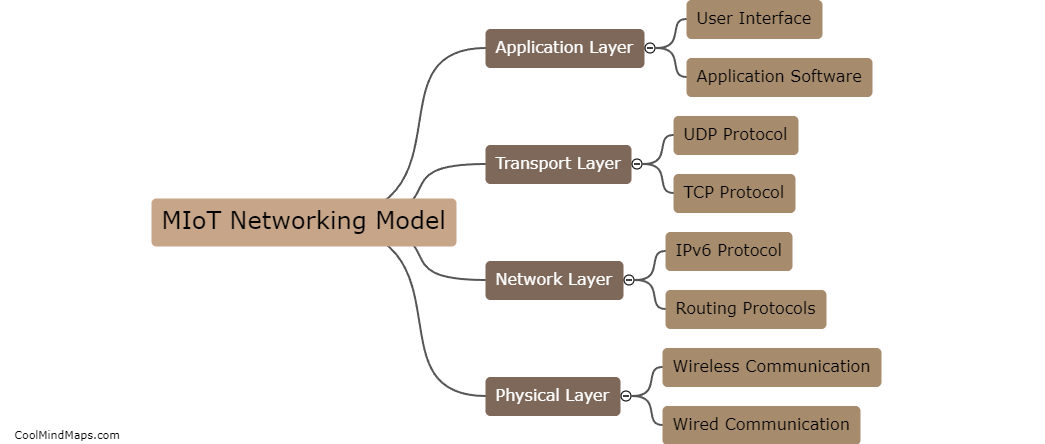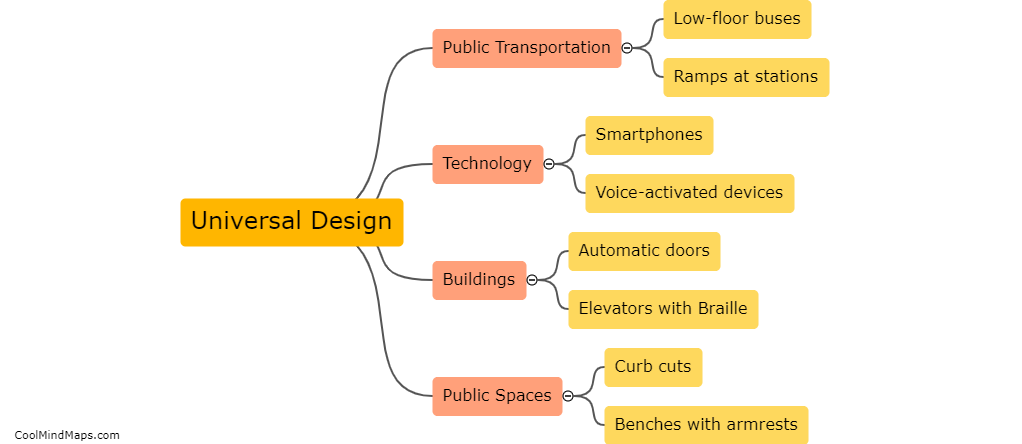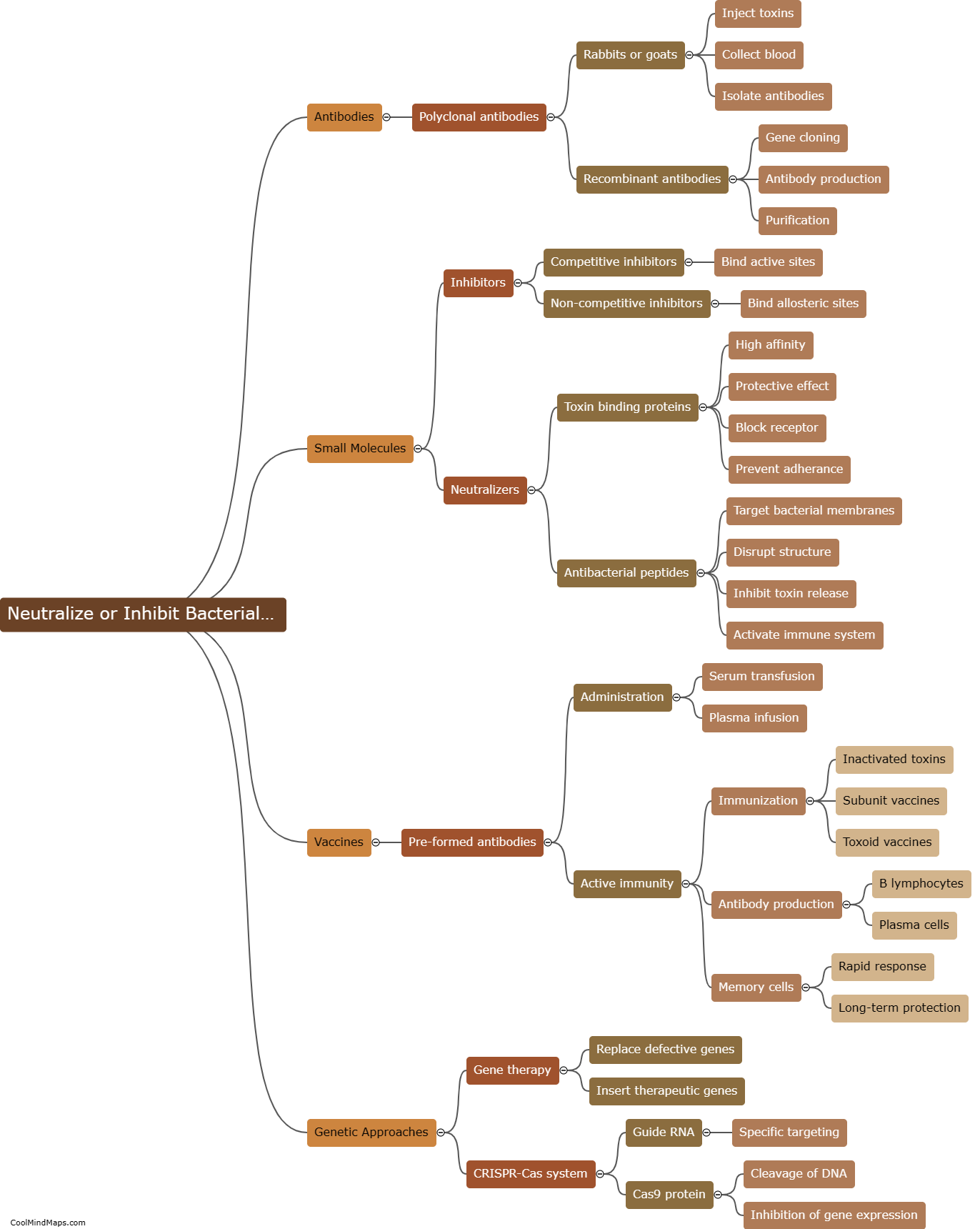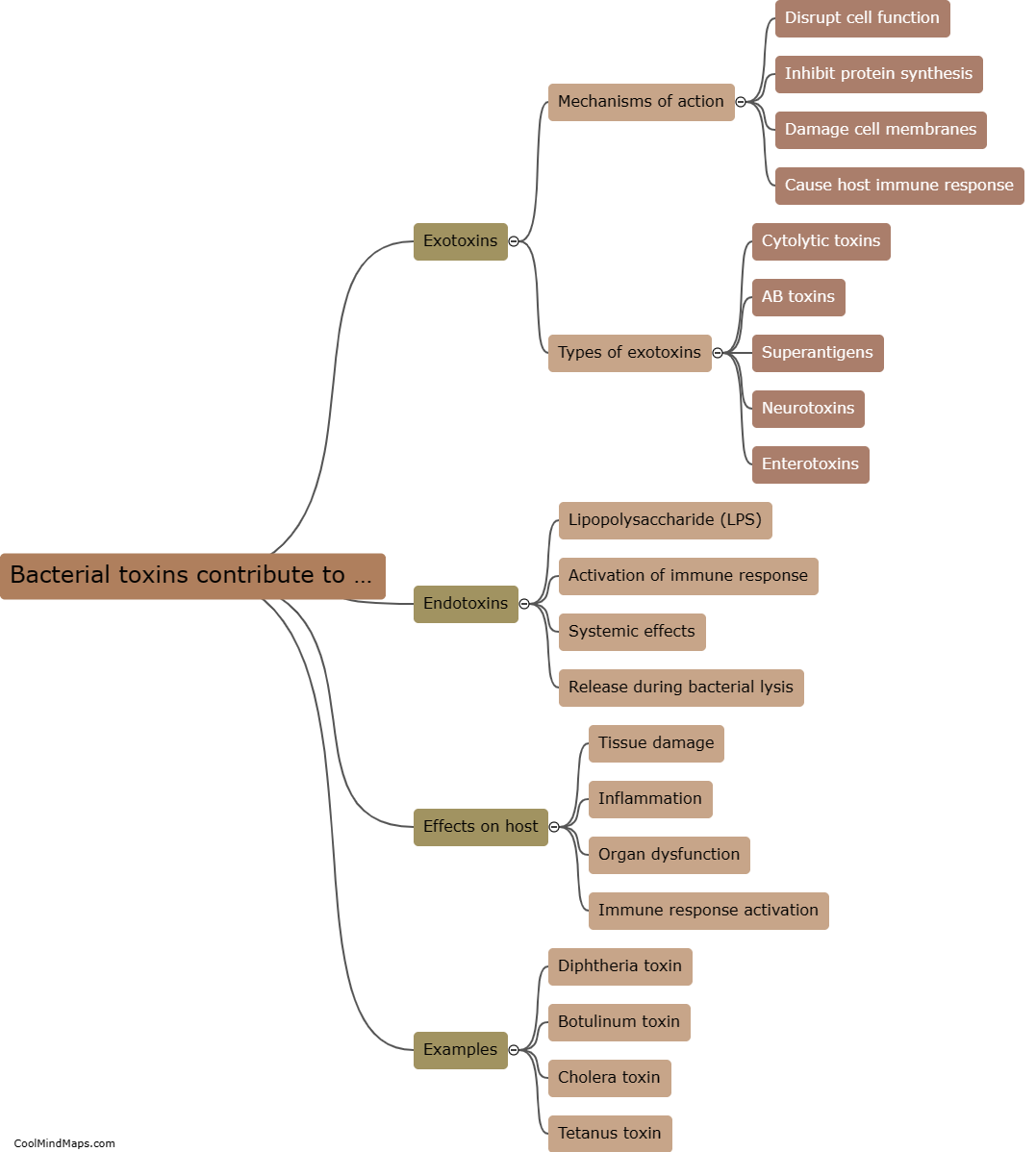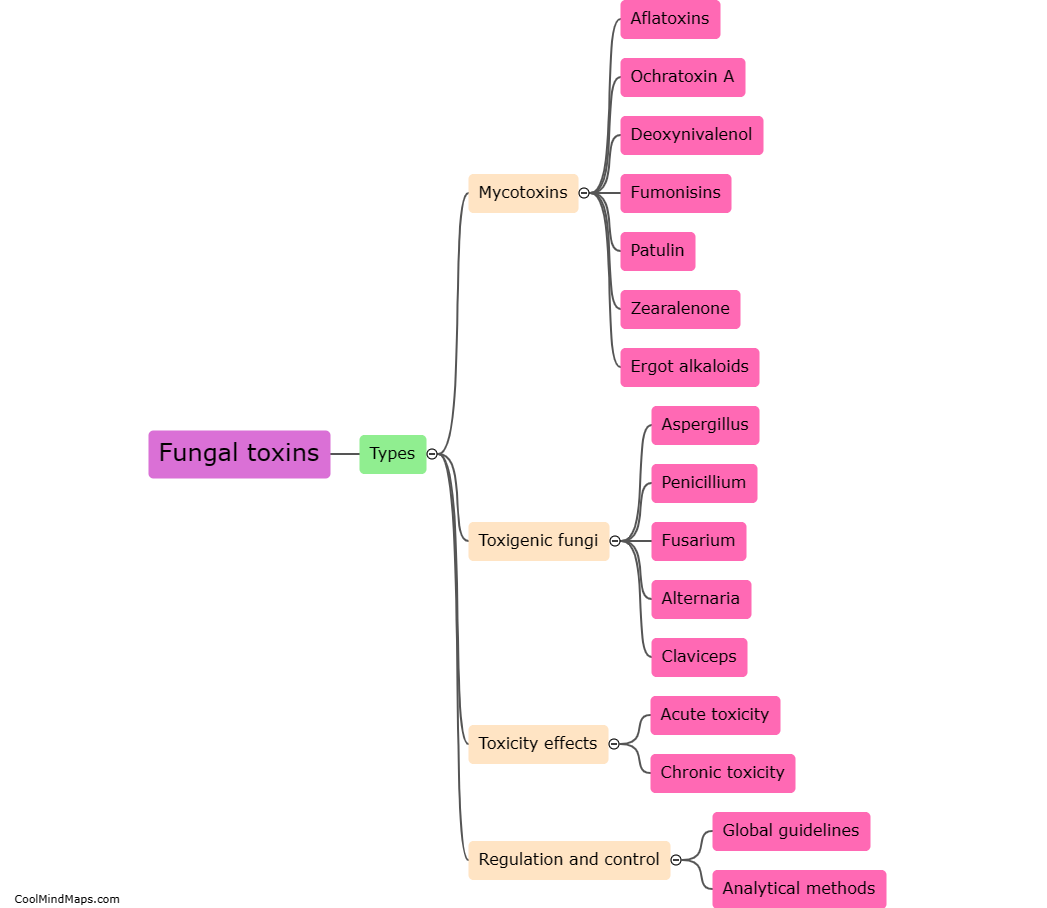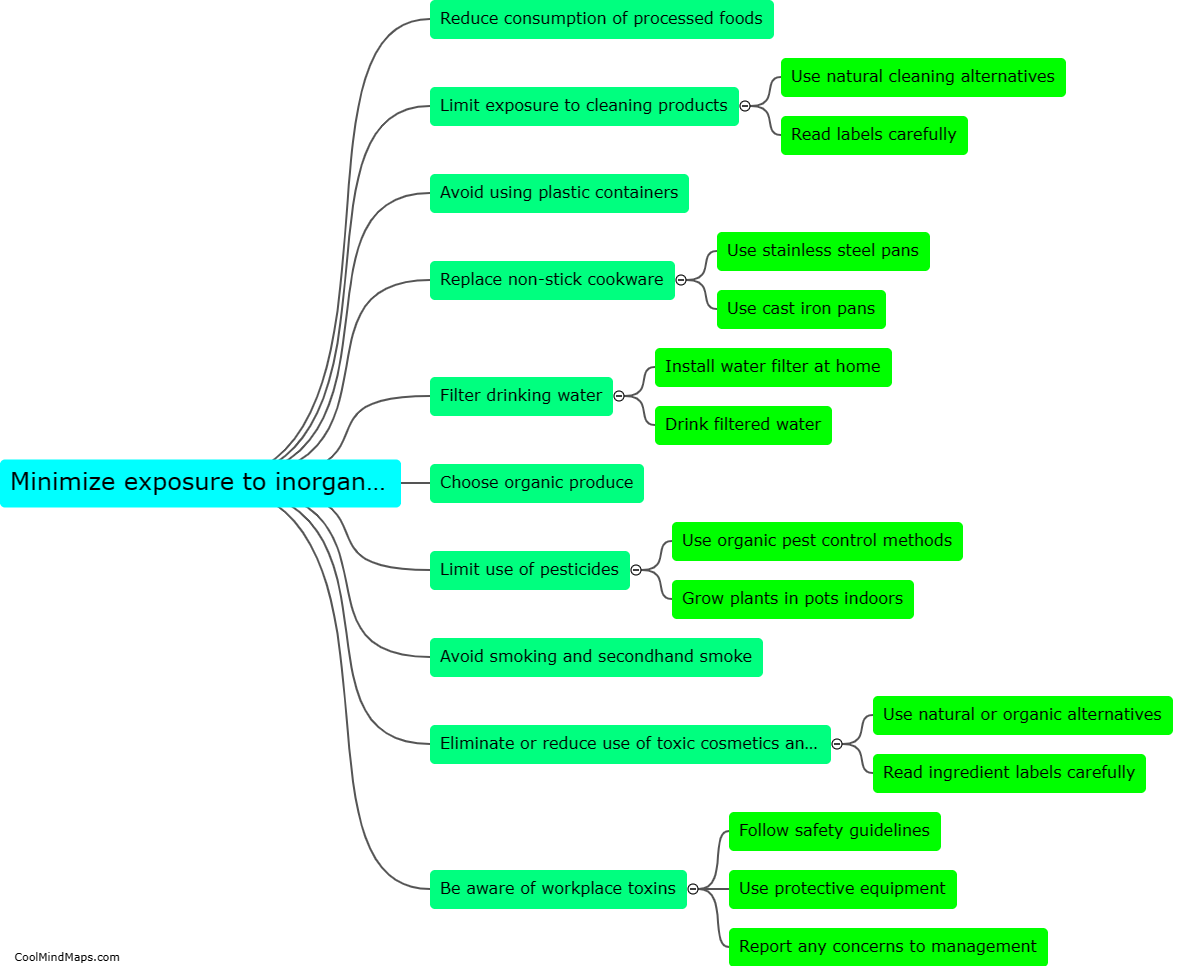How can fungal toxins be detected and measured?
Fungal toxins can be detected and measured through various techniques. One common method is the use of chromatography, specifically high-performance liquid chromatography (HPLC). HPLC allows for the separation and identification of different fungal toxins based on their chemical properties and retention times. Mass spectrometry (MS) is often coupled with HPLC to provide a more accurate measurement and identification of the toxins. Another technique is enzyme-linked immunosorbent assay (ELISA), which utilizes antibodies specific to the fungal toxin to detect and measure its presence. This method is quick, cost-effective, and suitable for large-scale screenings. Additionally, molecular methods like polymerase chain reaction (PCR) can be employed to target and amplify specific toxin genes. These techniques play a crucial role in food safety and public health by ensuring the accurate detection and measurement of fungal toxins in various samples, such as food, feed, and environmental matrices.
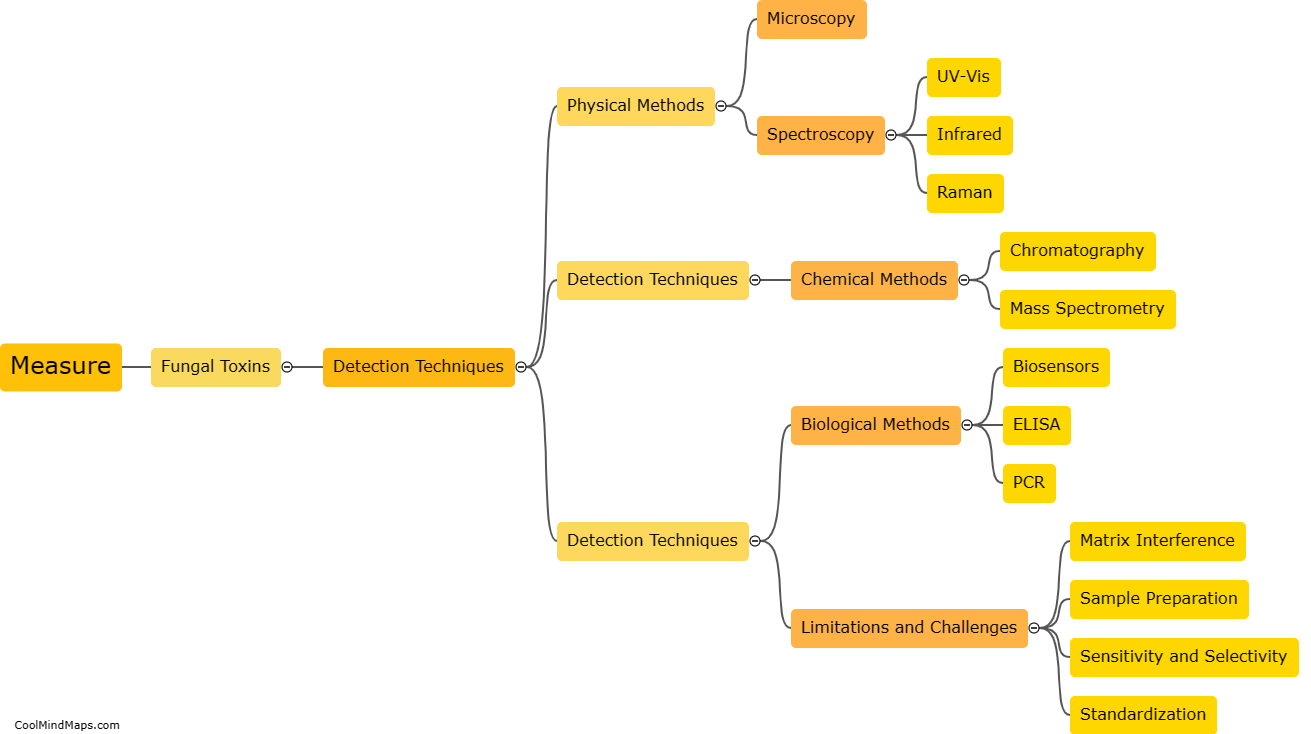
This mind map was published on 3 December 2023 and has been viewed 105 times.
